Audi e-tron GT vs Mercedes EQS SUV – Which model is better for everyday use?
Two cars, one duel: Audi e-tron GT meets Mercedes EQS SUV.
Which one wins in performance, efficiency and value for money? Find out now!
Here’s where it gets real: The technical differences in detail
Costs and Efficiency: Price and efficiency are often the first things buyers look at. Here it becomes clear which model has the long-term edge – whether at the pump, the plug, or in purchase price.
Audi e-tron GT has the slight advantage in terms of price – starting at 93300 £, while the Mercedes EQS SUV starts at 95000 £. That’s a price difference of about 1630 £.
When it comes to electricity consumption, the advantage goes to the Audi e-tron GT: with 17.90 kWh per 100 km, it’s hardly any more efficient than the Mercedes EQS SUV with 19.60 kWh. That’s roughly 1.70 kWh difference.
In terms of range, the Mercedes EQS SUV performs a bit better – offering up to 695 km, roughly 78 km more than the Audi e-tron GT.
Engine and Performance: Under the bonnet, it becomes clear which model is tuned for sportiness and which one takes the lead when you hit the accelerator.
When it comes to engine performance, the Audi e-tron GT clearly takes the lead – with 843 HP compared to 658 HP. That’s a power increase of roughly 185 HP.
In acceleration from 0 to 100 km/h, the Audi e-tron GT is decisively faster – completing the sprint in 2.90 s, while the Mercedes EQS SUV takes 4.40 s. That makes it around 1.50 s quicker.
In terms of top speed, the Audi e-tron GT is slightly ahead – reaching 250 km/h, while the Mercedes EQS SUV tops out at 210 km/h. The difference is roughly 40 km/h.
There’s also a difference in torque: the Audi e-tron GT pulls minimal stronger, offering 1027 Nm compared to 950 Nm. That’s about 77 Nm difference.
Space and Everyday Use: Cabin size, boot volume and payload all play a role in everyday practicality. Here, comfort and flexibility make the difference.
Seats: Mercedes EQS SUV offers somewhat more seating – 5 vs 4.
The Audi e-tron GT is slightly lighter – 2355 kg compared to 2695 kg. The weight difference is around 340 kg.
In trunk capacity, the Mercedes EQS SUV takes the lead – 645 L compared to 405 L. That’s around 240 L difference.
Payload capacity also favors the Mercedes EQS SUV a bit – 570 kg compared to 485 kg. The difference is roughly 85 kg.
Our verdict: The Audi e-tron GT takes the lead with a more balanced package and therefore earns the title of our DriveDuel Champion!
Audi e-tron GT is the better all-rounder in this comparison.
Audi e-tron GT
The Audi e-tron GT showcases a harmonious blend of luxurious design and electrifying performance, making it a standout in the realm of electric vehicles. Its sleek, aerodynamic contours are not just for show; they contribute to a driving experience that's as smooth as it is exhilarating. Inside, the cabin exudes an air of sophistication, offering cutting-edge technology and premium materials that speak to Audi's commitment to quality and innovation.
details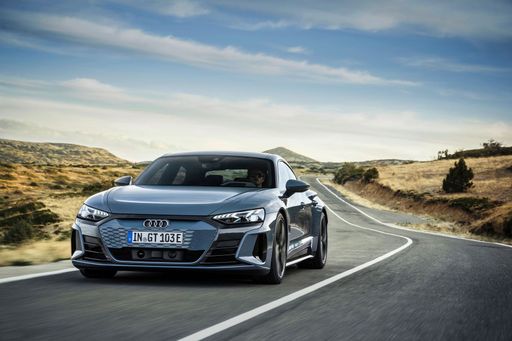 @ audi-mediacenter.com
@ audi-mediacenter.com
 @ audi-mediacenter.com
@ audi-mediacenter.com
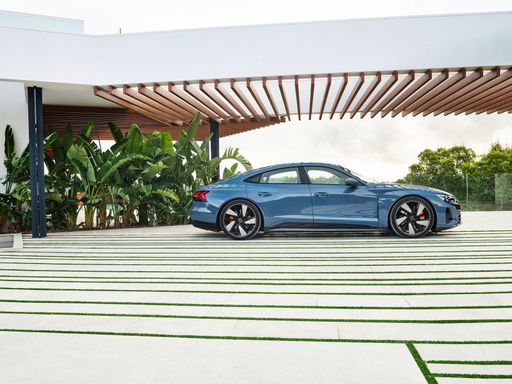 @ audi-mediacenter.com
@ audi-mediacenter.com
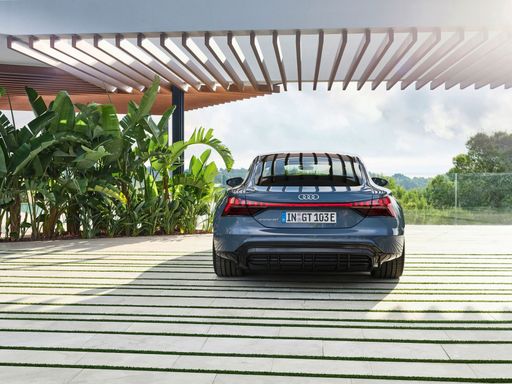 @ audi-mediacenter.com
@ audi-mediacenter.com
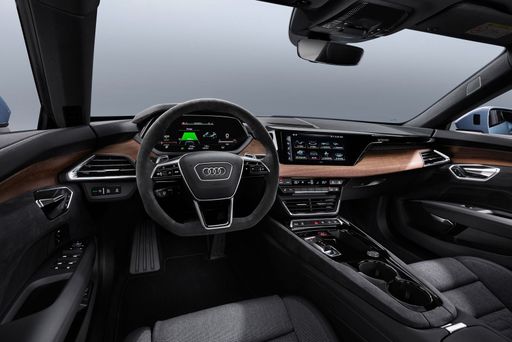 @ audi-mediacenter.com
@ audi-mediacenter.com
 @ audi-mediacenter.com
@ audi-mediacenter.com
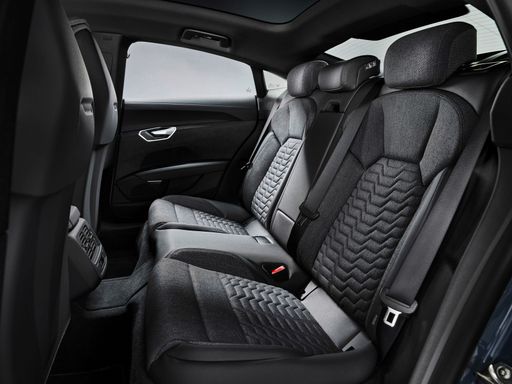 @ audi-mediacenter.com
@ audi-mediacenter.com
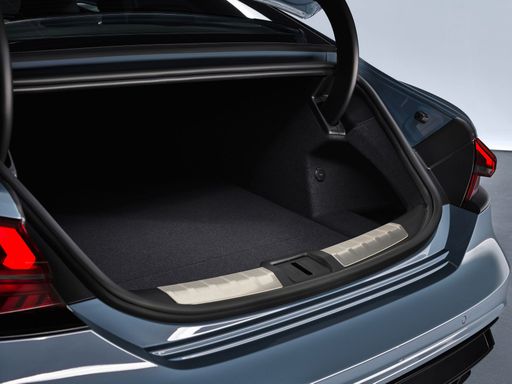 @ audi-mediacenter.com
@ audi-mediacenter.com
Mercedes EQS SUV
The Mercedes-Benz EQS SUV redefines luxury in the electric vehicle segment with its elegant design and cutting-edge technology. Its spacious interior provides exceptional comfort, featuring high-quality materials and innovative ambient lighting to create a serene driving environment. This SUV impressively combines sustainability with performance, offering a smooth and quiet ride without compromising on power.
details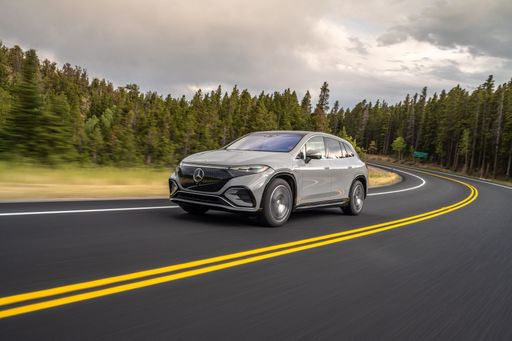 @ group-media.mercedes-benz.com
@ group-media.mercedes-benz.com
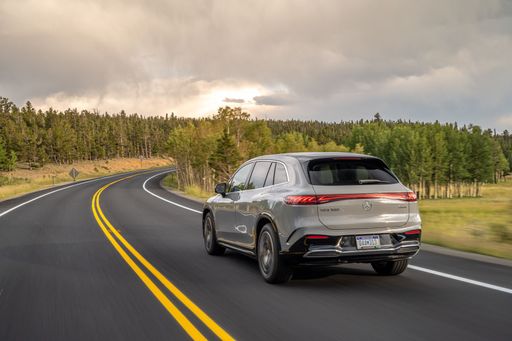 @ group-media.mercedes-benz.com
@ group-media.mercedes-benz.com
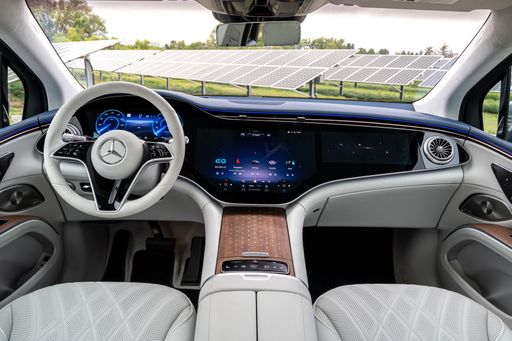 @ group-media.mercedes-benz.com
@ group-media.mercedes-benz.com
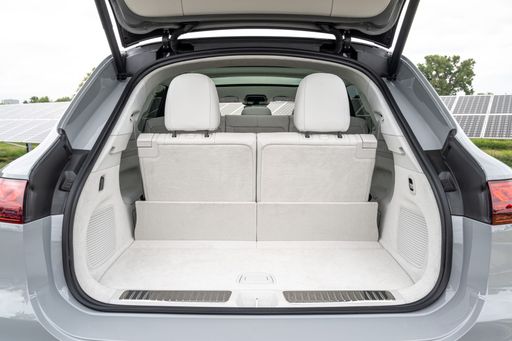 @ group-media.mercedes-benz.com
@ group-media.mercedes-benz.com

|

|
|
|
|
Costs and Consumption |
|
|---|---|
|
Price
93300 - 137600 £
|
Price
95000 - 212100 £
|
|
Consumption L/100km
-
|
Consumption L/100km
-
|
|
Consumption kWh/100km
17.9 - 19 kWh
|
Consumption kWh/100km
19.6 - 21.9 kWh
|
|
Electric Range
582 - 617 km
|
Electric Range
615 - 695 km
|
|
Battery Capacity
97 kWh
|
Battery Capacity
108.4 - 118 kWh
|
|
co2
0 g/km
|
co2
0 g/km
|
|
Fuel tank capacity
-
|
Fuel tank capacity
-
|
Dimensions and Body |
|
|---|---|
|
Body Type
Coupe
|
Body Type
SUV
|
|
Seats
4
|
Seats
4 - 5
|
|
Doors
4
|
Doors
5
|
|
Curb weight
2355 - 2395 kg
|
Curb weight
2695 - 3075 kg
|
|
Trunk capacity
350 - 405 L
|
Trunk capacity
440 - 645 L
|
|
Length
4997 - 5004 mm
|
Length
5125 mm
|
|
Width
1964 mm
|
Width
1959 - 2034 mm
|
|
Height
1379 - 1394 mm
|
Height
1718 - 1721 mm
|
|
Max trunk capacity
-
|
Max trunk capacity
2100 L
|
|
Payload
455 - 485 kg
|
Payload
425 - 570 kg
|
Engine and Performance |
|
|---|---|
|
Engine Type
Electric
|
Engine Type
Electric
|
|
Transmission
Automatic
|
Transmission
Automatic
|
|
Transmission Detail
Reduction Gearbox
|
Transmission Detail
Reduction Gearbox
|
|
Drive Type
All-Wheel Drive
|
Drive Type
All-Wheel Drive, Rear-Wheel Drive
|
|
Power HP
592 - 843 HP
|
Power HP
360 - 658 HP
|
|
Acceleration 0-100km/h
2.9 - 4 s
|
Acceleration 0-100km/h
4.4 - 6.8 s
|
|
Max Speed
245 - 250 km/h
|
Max Speed
210 km/h
|
|
Torque
625 - 1027 Nm
|
Torque
568 - 950 Nm
|
|
Number of Cylinders
-
|
Number of Cylinders
-
|
|
Power kW
430 - 620 kW
|
Power kW
265 - 484 kW
|
|
Engine capacity
-
|
Engine capacity
-
|
General |
|
|---|---|
|
Model Year
2024 - 2025
|
Model Year
2024
|
|
CO2 Efficiency Class
A
|
CO2 Efficiency Class
A
|
|
Brand
Audi
|
Brand
Mercedes-Benz
|
Is the Audi e-tron GT offered with different drivetrains?
Available configurations include All-Wheel Drive.
The prices and data displayed are estimates based on German list prices and may vary by country. This information is not legally binding.
